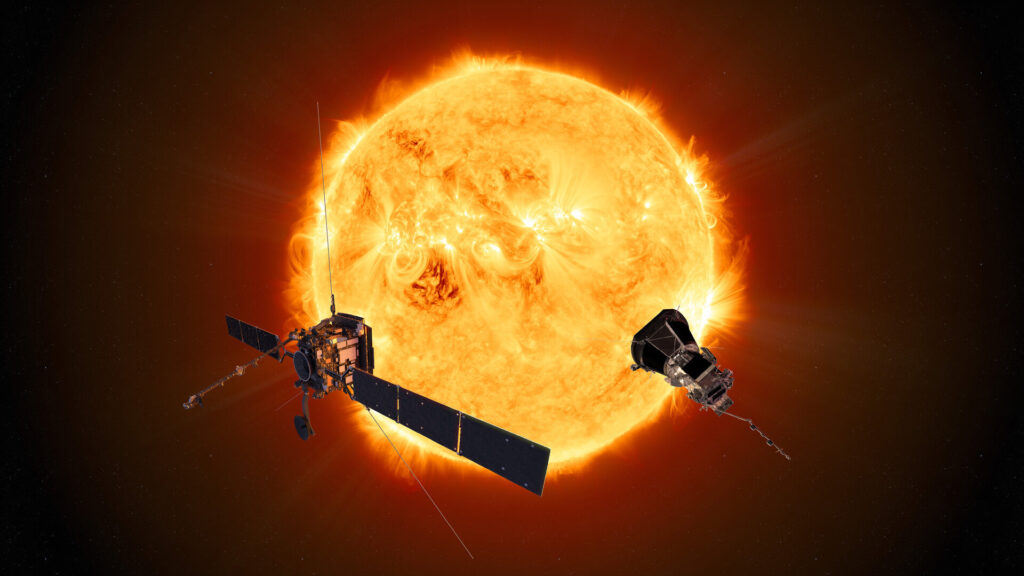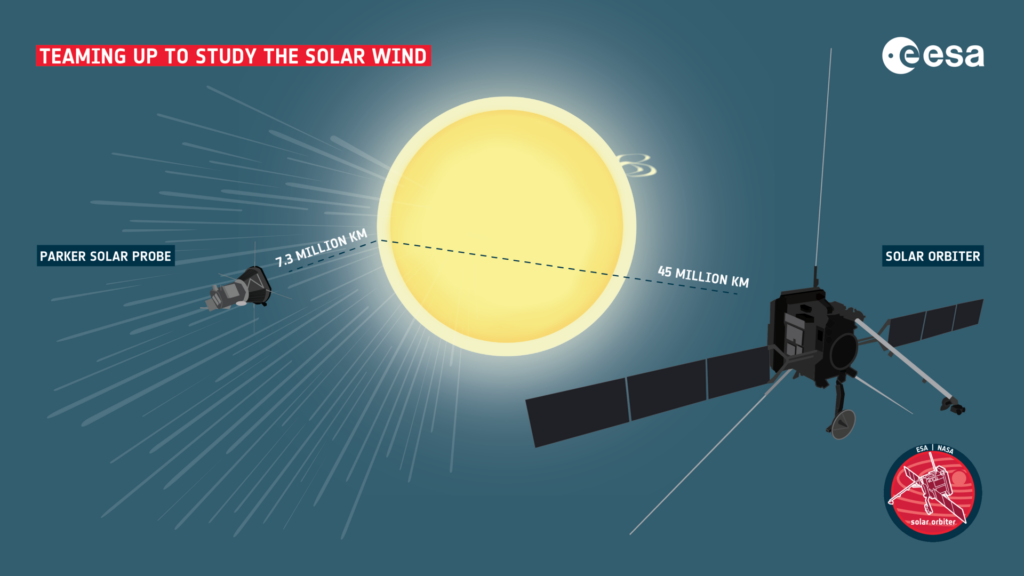Ahead of the April total solar eclipse, NASA and ESA have decided to join forces to study the Sun. The unique orbital configuration of the Solar Orbiter and Parker Solar Probe probes will help them in this.

Solar Orbiter and Parker Solar Probe are in very elongated orbits. This is because engineers have sought to minimize the time during which they are exposed to the maximum level of solar radiation. This means that the devices rapidly pass the perihelion of their orbit, after which they move away from the Sun and transmit the data they collect to Earth.
In the coming days, Solar Orbiter and Parker Solar Probe will simultaneously pass the perihelion of their orbits (45 and 7.3 million km, respectively) for the first time. Scientists from NASA and ESA decided to take advantage of this rare opportunity to combine their observations of the solar wind.

The idea is as follows. With the help of its telescopes, Solar Orbiter will conduct observations of the areas of the Sun where the solar wind forms. A few hours after that, the Parker Solar Probe will fly by and study the substance it emitted. This will allow scientists to better understand the connection between the Sun and its heliosphere, a huge plasma bubble that it blows into space.
The researchers also hope that they will be able to hit the jackpot. This will happen if the Solar Orbiter notices a coronal mass ejection (CME) heading towards the Parker Solar Probe. Then scientists will have the opportunity to see the restructuring of the outer atmosphere of the Sun in great detail, and then study the structure of the emission. As our luminary is approaching another peak of its activity and has produced a number of powerful flares in recent weeks, these hopes are not without reason.
According to https://www.esa.int
Follow us on Twitter to get the most interesting space news in time
https://twitter.com/ust_magazine


